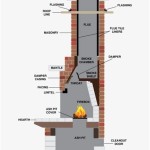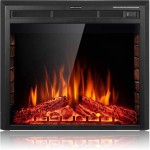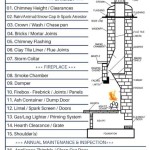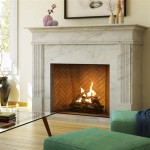Fireplace Non-Combustible Surround Code: A Comprehensive Guide
Fireplaces, whether wood-burning, gas-burning, or electric, add warmth and aesthetic appeal to residential and commercial spaces. However, the heat generated by a fireplace can pose a significant fire hazard if not properly managed. Building codes and regulations are in place to mitigate these risks, primarily focusing on the use of non-combustible materials in the vicinity of the fireplace. This article delves into the intricacies of the non-combustible surround code requirements, exploring the materials, clearances, and specific regulations that pertain to fireplace installations.
The primary objective of these codes is to prevent the ignition of combustible materials near the fireplace. The area surrounding the firebox, often referred to as the fireplace surround, is subject to strict regulations concerning the type of materials used and the distances maintained from the firebox opening.
Understanding Non-Combustible Materials
The cornerstone of fireplace safety is the use of non-combustible materials. These materials are inherently resistant to fire and will not contribute to the spread of flames. The precise definition of a non-combustible material is typically outlined in the relevant building codes and is based on standardized testing procedures. National and international codes often reference standards such as ASTM E136, which details a method for determining whether a material qualifies as non-combustible.
Common examples of non-combustible materials suitable for fireplace surrounds include:
- Brick: A classic and widely used material known for its fire resistance and durability.
- Stone: Natural stone, such as granite, marble, or slate, is inherently non-combustible.
- Concrete: Both poured concrete and concrete board are viable options, offering versatility in design.
- Metal: Steel, cast iron, and other metals are non-combustible and can be used for decorative elements or structural components.
- Cement Board: A manufactured composite material designed to be non-combustible and water-resistant. It is frequently used as a substrate for other finishing materials.
- Tile: Ceramic and porcelain tiles are non-combustible and offer a wide range of aesthetic possibilities.
It is crucial to verify that the chosen material meets the specific requirements of the local building codes. Material certifications and testing reports can provide evidence of compliance. Some materials may be treated to enhance their fire resistance, although it is essential to confirm that the treatment is permanent and does not degrade over time. For example, wood that is fire-retardant treated might not be considered non-combustible unless specifically approved by the local authority having jurisdiction (AHJ).
The choice of non-combustible material often depends on the aesthetic preferences of the homeowner or designer, as well as the overall style of the room. However, safety considerations should always take precedence over purely aesthetic choices.
Clearance Requirements: Maintaining Safe Distances
Even when non-combustible materials are used, maintaining adequate clearance from the firebox opening to combustible materials is critical. Clearance refers to the minimum distance required between the firebox and any combustible surfaces. These clearances are specified in building codes and manufacturer instructions and are designed to prevent heat transfer from igniting nearby materials.
Clearance requirements vary depending on the type of fireplace, the fuel used (wood, gas, or electric), and the specific design of the firebox. Wood-burning fireplaces typically have the strictest clearance requirements due to the higher temperatures and potential for sparks and embers. Gas fireplaces generally have lower clearance requirements, but it is still essential to adhere to the manufacturer's specifications and local codes.
Typically, clearances are specified in inches or millimeters. For example, a building code might require a minimum of 6 inches of clearance from the sides of the firebox opening to any combustible materials and 12 inches above the opening. These distances are measured from the closest point on the firebox opening to the combustible material.
It is important to note that these are minimum requirements. In some cases, the manufacturer's instructions may specify even greater clearances. Always prioritize the more stringent requirement, whether it is the building code or the manufacturer's instructions.
The area within the specified clearance zone must be entirely free of combustible materials. This includes framing members, wall coverings, trim, and any other items that could potentially ignite. If combustible materials are present within the clearance zone, they must be adequately protected with non-combustible materials or the fireplace must be modified to meet the clearance requirements. One common method of accomplishing this is by installing a non-combustible barrier, like cement board, over the combustible surface ensuring that the distance from the firebox opening to the leading edge is in line with code.
The hearth extension is another critical aspect of clearance requirements. The hearth extension is the non-combustible area that extends outwards from the front of the firebox opening. Its purpose is to protect the flooring from sparks and embers that may escape from the fireplace. The dimensions of the hearth extension are also specified in building codes and depend on the size of the firebox opening. Typically, the hearth extension must extend at least 16 inches in front of the firebox opening and 8 inches to the sides. For larger fireplaces, the hearth extension requirements may be even greater.
Specific Code Requirements and Variations
While the principles of using non-combustible materials and maintaining adequate clearances are universal, the specific code requirements can vary depending on the jurisdiction. Building codes are typically adopted and enforced at the state or local level, and there may be variations in the specific provisions related to fireplace surrounds.
The International Residential Code (IRC) and the International Building Code (IBC) are widely used model codes that provide comprehensive guidelines for fireplace construction. These codes are often adopted by states and municipalities, but they may be amended to reflect local conditions and preferences.
In addition to the IRC and IBC, other codes and standards may apply, such as the National Fire Protection Association (NFPA) standards. NFPA 211, for example, provides standards for chimneys, fireplaces, vents, and solid fuel-burning appliances. It is essential to consult the specific codes and standards that are in effect in the relevant jurisdiction to ensure compliance.
When installing a fireplace, it is advisable to consult with a qualified building inspector or fire safety professional. These experts can provide guidance on the applicable code requirements and ensure that the installation meets all safety standards. Obtaining the necessary permits and inspections is also crucial to avoid potential penalties and ensure the safety of the occupants.
Furthermore, it's essential to consult the fireplace manufacturer's installation instructions. These instructions provide specific guidance on the proper installation of the fireplace, including the required clearances and the recommended materials for the surround. The manufacturer's instructions should always be followed in conjunction with the applicable building codes.
Variations in code requirements can also arise from the type of fuel used in the fireplace. Wood-burning fireplaces, due to the nature of solid fuel combustion, often have more stringent requirements than gas or electric fireplaces. Wood-burning fireplaces produce higher temperatures and have a greater risk of sparks and embers escaping, necessitating larger clearances and more robust non-combustible surrounds. Gas fireplaces, while cleaner-burning, still generate significant heat and require compliance with specific codes related to gas appliance installations.
Electric fireplaces, while not producing open flames, still generate heat and should be installed in accordance with the manufacturer's instructions and any applicable building codes. Although the clearance requirements may be less stringent than those for wood-burning or gas fireplaces, it is essential to ensure that the surrounding materials are heat-resistant and will not be damaged by the heat generated by the electric fireplace.
Staying informed about local code changes and updates is also crucial. Building codes are periodically revised to reflect advancements in technology, safety standards, and construction practices. It is the responsibility of the homeowner or contractor to ensure that the fireplace installation complies with the latest version of the applicable codes.
In conclusion, adhering to the non-combustible surround code is paramount for ensuring the safe and proper installation of a fireplace. By understanding the principles of non-combustible materials, clearance requirements, and specific code provisions, homeowners and contractors can create a fireplace that provides warmth and ambiance without compromising safety. Consulting with qualified professionals and obtaining the necessary permits and inspections are essential steps in ensuring code compliance and protecting against fire hazards.

Fireplace Construction

Fireplace Safety And Codes

Fireplace Hearth Extension Rules Structure Tech Home Inspections
Mantle And Fireplace Surround Minimum Clearances

Fireplace Chimney Clearances Information Canadian

Fireplace Safety And Codes
Another Mantel Surround Clearance Issue Here Hearth Com Forums Home

Fireplace Safety And Codes

How Fireplace Inserts Work We Love Fire

Is Your Fireplace Mantel Safe








